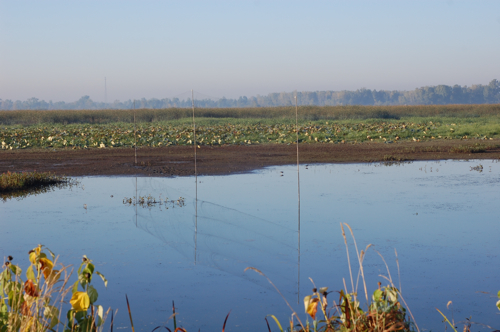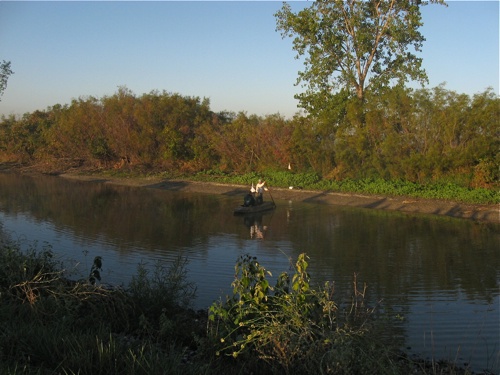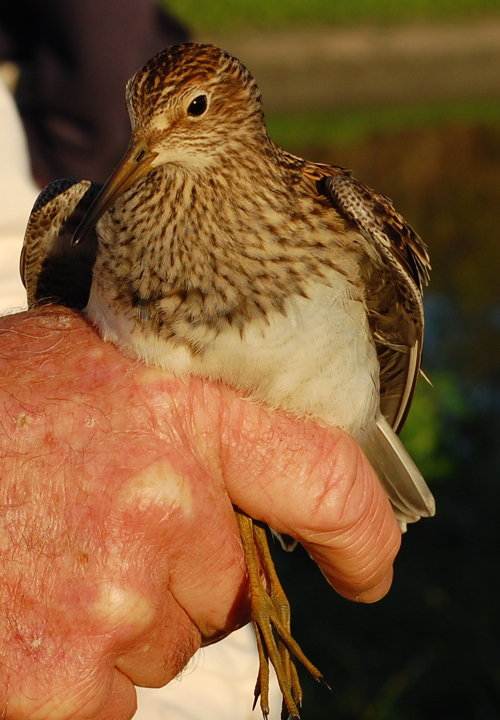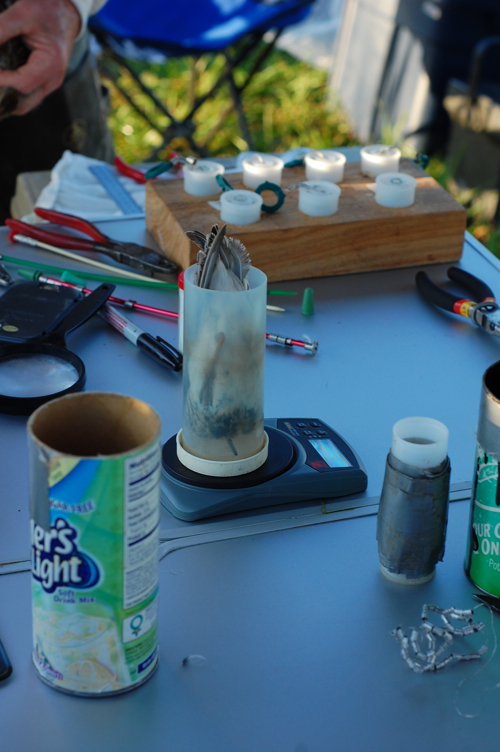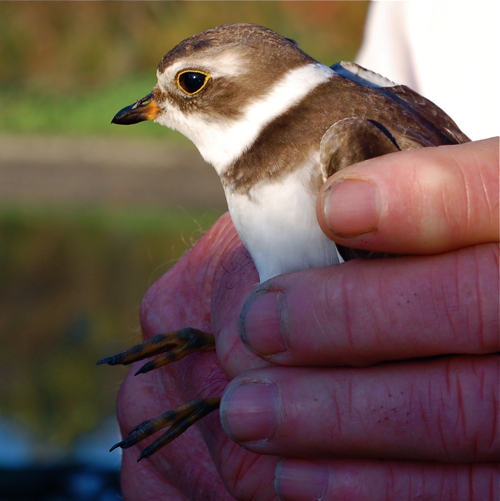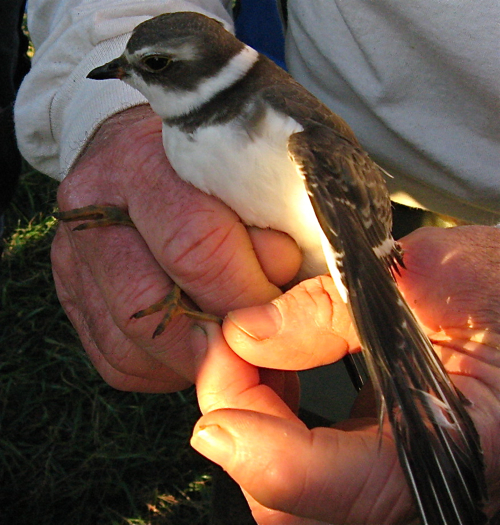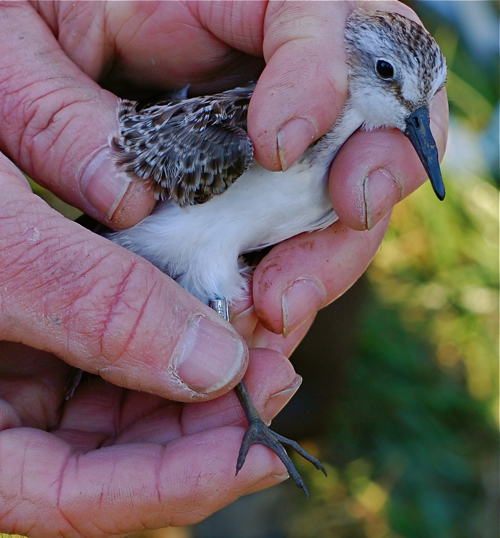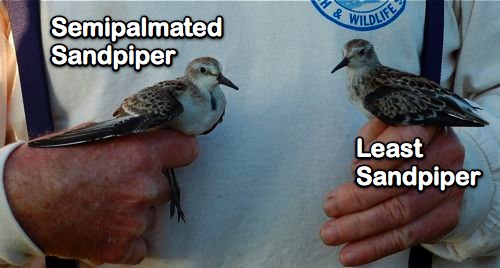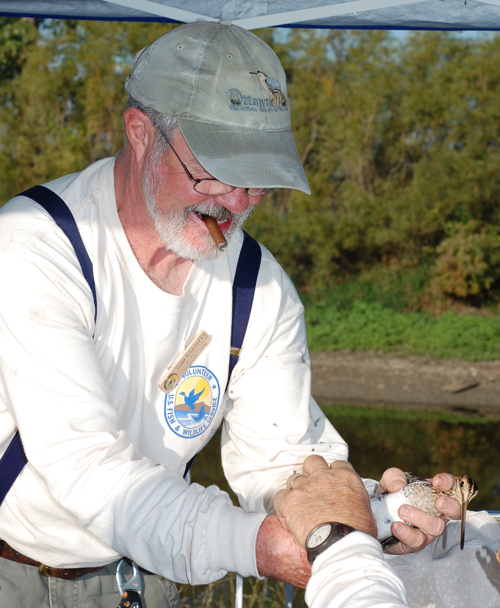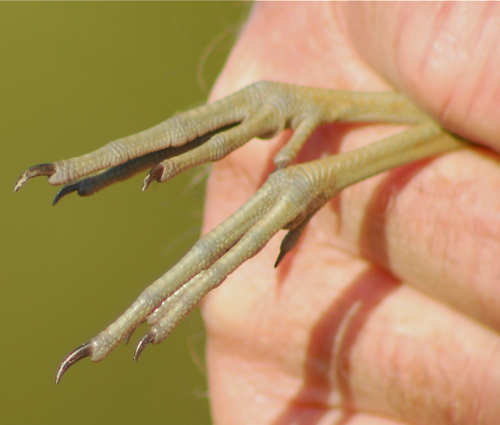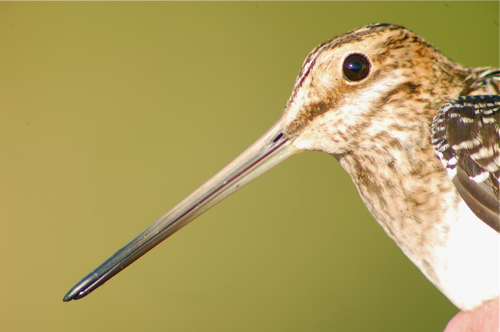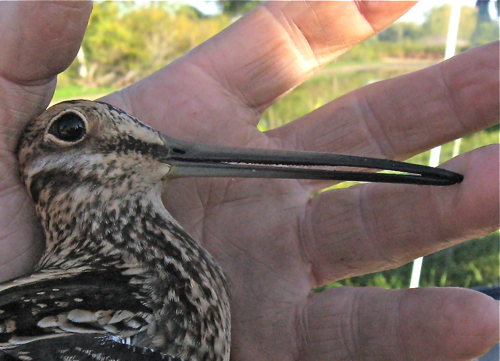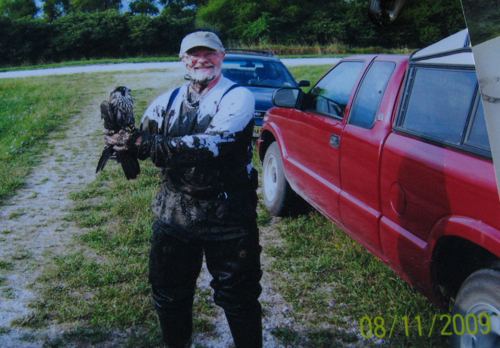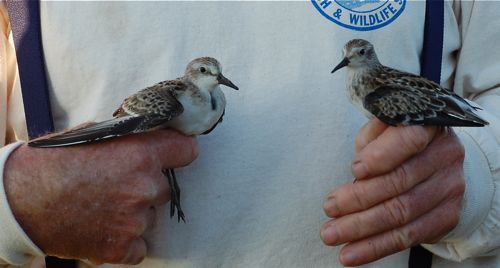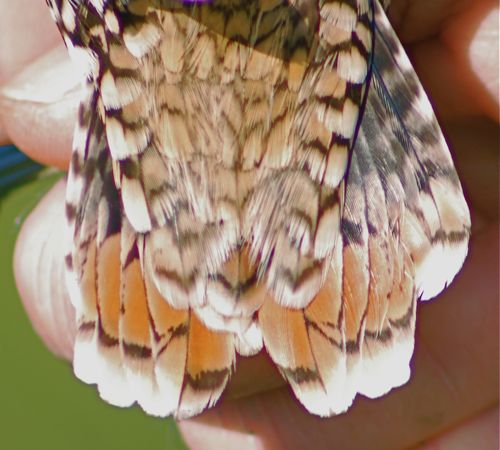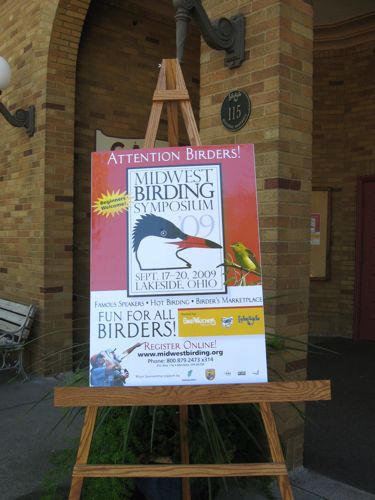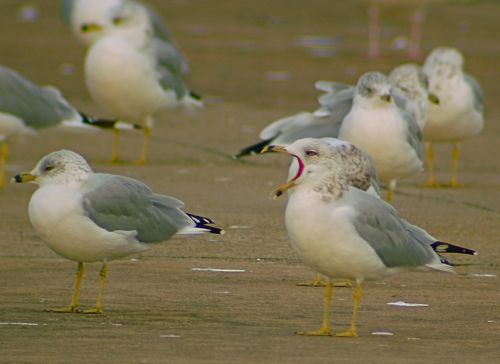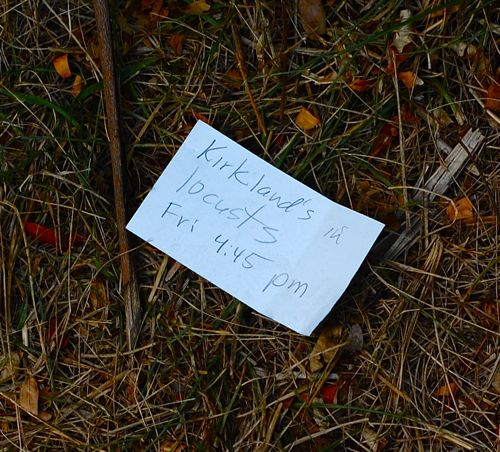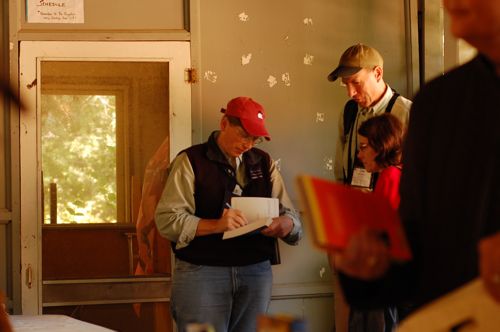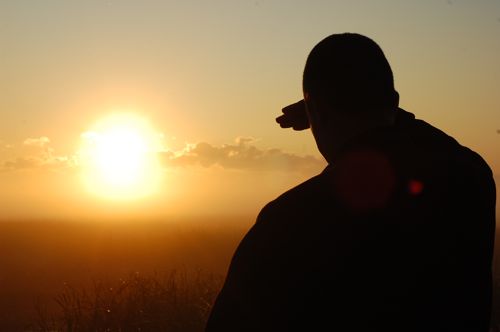 A birder scans the dawn for migrants. What a beautiful morning at Ottawa National Wildlife Refuge in Ohio! During the Midwest Birding Symposium, I got the opportunity to observe some shorebird banding last Friday (which was a fun change of pace from the usual songbird banding I do on Fridays). The banding started at dawn and involved two men named Tom.
A birder scans the dawn for migrants. What a beautiful morning at Ottawa National Wildlife Refuge in Ohio! During the Midwest Birding Symposium, I got the opportunity to observe some shorebird banding last Friday (which was a fun change of pace from the usual songbird banding I do on Fridays). The banding started at dawn and involved two men named Tom.
The nets were set in areas where the shorebirds were feeding. The banders had to be careful to too keep the bottoms of the nets high, so if too many birds were caught, the nets wouldn't droop down into the water. You had to wear some serious waders in order to put the nets up and to retrieve the birds.
Some birds were not buying it, like the above pectoral sandpiper (that's a yellowlegs blurred in the background). Some birds fed right under the nets, while others flew right above and below. However, many flew into the nets and we got to see quite a large variety of shorebird species in the hand.
Some of the nets were not easy to get to. Shorebird feed on mudflats and that gets messy. They had to cross a stream to be able to get at the nets in a fast and easy manner.
Look at this beauty--a pectoral sandpiper. This is one I can remember, note how far the brown goes down on its body before it meets the white. The brown goes down much further on this bird than it would on a semipalmated or least--plus it's bigger. The birds were all smaller in hand than they look in the field, which is what I expected. According to bird banding guru Peter Pyle, this bird takes a band size of 1A. You can put a 1A band on a cardinal to give you an idea of size.
The banders took the usual measurement of wings and tail, but also checked weight. This was done swiftly, by quickly inserting the shorebird into a tube and setting it on a scale (the weight of the tube was already calculated on the scale. I think the banders had all of their measurements taken, banding and then assessment of age and sex in less than 60 seconds. They were quick, with the shorebird's safety and health a primary concern.
Here's a cute little bird! It's the sample size version of the killdeer, a semipalmated plover. Don't you just love that yellow eyering? These also take a small 1A band like the pectoral (and cardinal). After this bird was banded, it flew across the nearby creek and began to forage as though nothing had happened.
And if you are wondering what the name "semipalmated" is all about, it refers to the slight webbing between the toes. See? Again, a bird named back in the day when they were shot first and identified later. It's something seen easily in hand and up close to the face, but rarely seen when the bird is running around on a mudflat. And believe it or not, non birders, this is not the only semipalmated bird out there.
We also got a semipalmated sandpiper into the nets too. Above you can see Tom splaying the toes revealing the partial webbing between the toes. This bird had a slight deformity on its bill, there was a lump in the middle. Had it flown into a window at some point? Was it just some sort of odd defect it was hatched with? Who can say?
If you remember the photo from the previous entry, I asked if these were the same birds or different. Even in hand, up close it can be a challenge. Normally, I would point out the bill differences, but the semipalmated has that notch in its beak. Another way I tell the two apart in Minnesota is also covered up. Semipalm's bill and feet appear to be the same color, least sandpipers feet look lighter in color than the bill (you'll have to take my word on that since the least's feet are covered up in that photo). You can see some examples here.
The coolest bird of the day for me was a Wilson's snipe that came into the nets. What a great bird and what a treat to see up close. Above is bander Tom Bartlett, reminding me a bit of Hannibal of the A-Team, loving it when a shorebird plan comes together. And for the record, all we had to do to get this snipe was put up banding nets in the morning, no one was out in the middle of the night with a pillowcase making strange noises.
Here are some snipe toes, remarkably clean for a bird that wanders in mud.
Here's a shot of the head and that incredibly long beak it uses to probe in mud. The bill of the snipe is so flexible that it can open just the tips without opening the whole bill! Sensory pits at the tip of the bill allow the snipe to feel its prey deep in the mud. It's bill is also handy for yanking the occasional worm too.
Tom tried to gently reveal the serrations inside the bill. There are a couple of different theories as to how the snipe gets food and perhaps it uses both. Some think that they may suck up food when the bill is probed in soil and others think the serrations pointing back towards its mouth in conjunction with its tongue will help move prey found in mud. Still something we can learn.
Tom does have to bee quick when getting birds out of the nets. He showed us this photo from just last month when a young peregrine falcon saw shorebirds struggling in the nets and thought it might be easy prey. Tom got a little messy, but was able to get the falcon before it got the shorebirds.
This was a fun and educational experience and hands down one of my favorite birding moments at the Midwest Birding Symposium.

